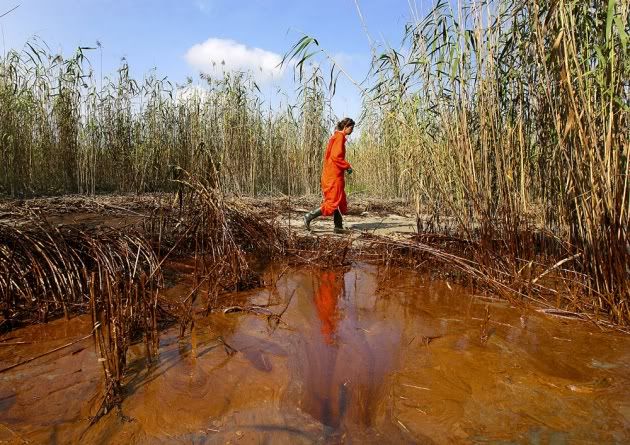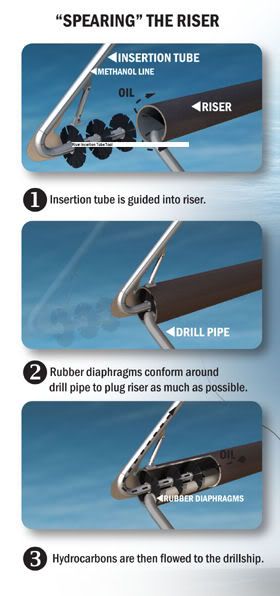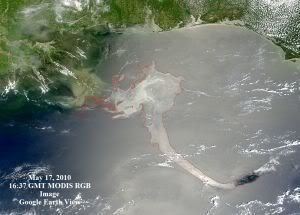Exactly how far does BP have to go, how many times does it have to blunder and fail and make excuses while it tries to preserve its investment in the leaking well, before the US pushes BP out of the way and stops the leak that is now destroying the Gulf of Mexico? Apparently, pretty damn far. Long story short, the US isn’t going to take over the problem at this point. You know we’re in big, big trouble when the intervention of the US Army Corps of Engineers looks like an improvement in disaster management.
This from Reuters makes the US government’s intentions less than perfectly clear:
The U.S. government will move aside BP (BP.L) from the operation to try to halt the Gulf of Mexico oil spill if it decides the company is not performing as required in its response to the well leak, U.S. Interior Secretary Ken Salazar said on Sunday.
“I am angry and I am frustrated that BP has been unable to stop this oil from leaking and to stop the pollution from spreading,” Salazar told reporters after visiting BP’s U.S. headquarters in Houston.
“We are 33 days into this effort and deadline after deadline has been missed,” Salazar added, referring to the failure of containment efforts attempted so far by London-based BP to control the gushing undersea well one mile (1.6 km) down on the ocean floor.
President Barack Obama’s administration is facing growing public and political pressure to take full charge of the oil spill containment operation as criticism against BP grows.
Yeah, Ken, we’re all angry and frustrated. But, guess what? We’re not the Secretary of the Interior or of anything else. We’re not in the cabinet. We’re sitting here watching the Gulf of Mexico turn into a petrol gumbo laced with oil coated pelicans.
And what exactly do you mean when you say, “if” the company isn’t performing as required? Performing as required means that the leak is stopped. Closed up. That there’s no more oil. Running a straw into the leak so that BP can sell it and make money on it isn’t exactly “performing as required.”
“If we find they’re not doing what they’re supposed to be doing, we’ll push them out of the way appropriately,” Salazar said, but he did not specify at what point this would occur or what might be the trigger for it.
“This is an existential crisis for one of the world’s largest companies,” he said, in a reference to the billions of dollars of cleanup and damages costs that BP faces.
Give me a f*cking break. That last paragraph has to be some kind of sick joke. “An existential crisis for one of the world’s largest companies?” Dude, it’s an existential crisis for the Gulf of Mexico, its inhabitants, and its wild life if not the oceans generally and the planet. You think I or anybody else gives a rat’s ass whether BP fails?
If you know how to stop the leak, it’s really time to stop it. This sitting and watching as BP diddles and tries to harmonize stopping the leak with preserving its investment in the well is going to kill the Gulf, if it hasn’t done so already. 33 days is more than enough time to stop the leak.
The federal response, described in your brilliant statements today, is what I call feckless. And that’s the nicest term I can find to describe it. This is a disgrace. The only thing we’re lacking at the moment is the icing. That would be Obama telling Ken Salazar what a great job he’s doing. I wish I didn’t think that was next up.
———————-
simulposted at The Dream Antilles and dailyKos

 I’m going to hazard a few predictions here. I hope I’m wrong. If I am you can crucify me later.
I’m going to hazard a few predictions here. I hope I’m wrong. If I am you can crucify me later.
 Video compiled from data produced by The College of Marine Science, University of South Florida, Ocean Circulation Group
Video compiled from data produced by The College of Marine Science, University of South Florida, Ocean Circulation Group